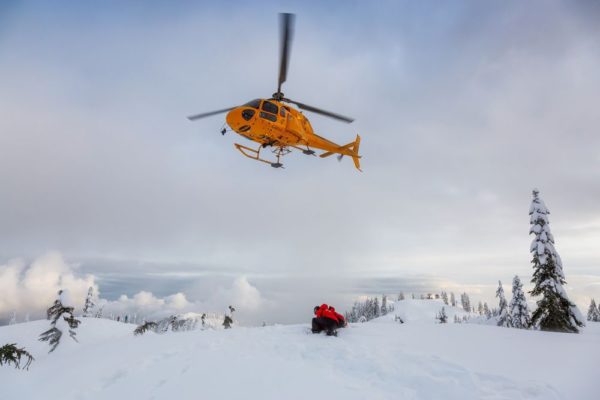Organized rescue groups for responding to wilderness emergencies.
In the U.S., most mountain regions have a search and rescue organization that can respond to emergent avalanche incidents. Organized rescue may be able to respond on the ground and/or via helicopter. In some cases, search and rescue parties can respond quickly enough to assist in victim search and recovery, and in other cases, response can take days. Search and rescue teams may delay ground response if nightfall is impending or if weather or avalanche conditions are dangerous. Helicopters are unlikely to fly in snow storms, windy conditions, or at night. In order for a helicopter to land, it will need a flat and tree-free clearing so that the blades are unobstructed. Your group will have to transport injured patients to the landing zone. Helicopters won’t be able to land in deep, unconsolidated snow because their blades will create blinding whiteout conditions for the pilot. You can help by packing down the snow in the landing zone. Secure any loose gear to prevent it from flying into the blades.

